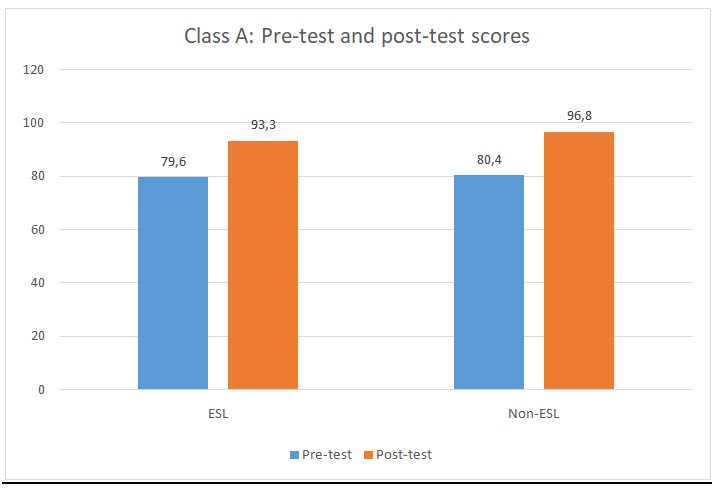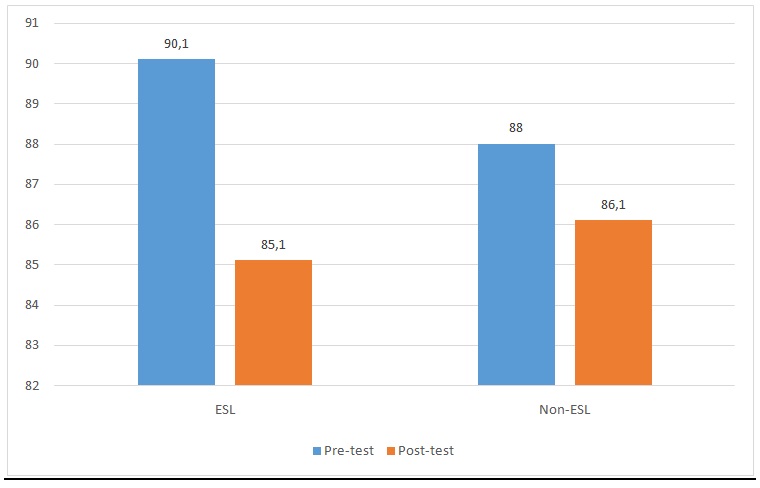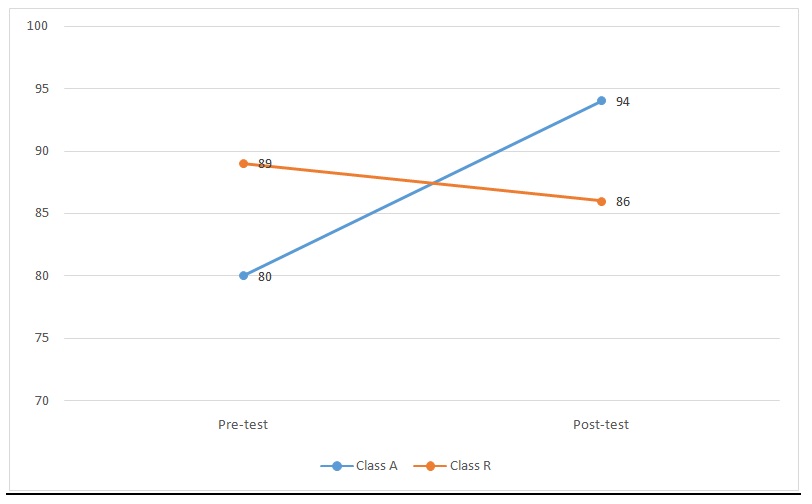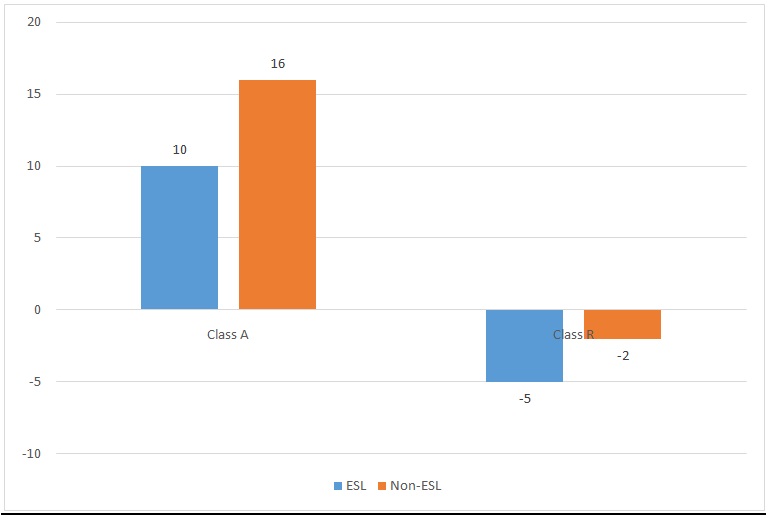Introduction
Current research was supposed to study the effect that the method of science wall has on the performance of ELL students. Frequently, ELL students have problems with learning scientific language that result in difficulties with understanding the topic. Previous knowledge is usually not enough because of multiple meanings of such words. Interactive word wall known as science wall can be one of the methods that provide better understanding of the topic concepts and, thus, better comprehension of learning material. The study was conducted on two classes, experimental and control. There were three research questions to answer during the course of this study. The experiment had to disclose the following concerns. 1) What are the effects of using science word walls for first grade ELL? 2) What are the effects of using multi-sensory science word walls for first grade ELL? 3) What are the effects of introducing vocabulary science words (on science wall) with example images differ from introducing science vocabulary words by themselves?
The study was conducted on two classes, experimental and control. Both classes consisted of 15 students, each including ESL and non-ESL. There was equal numbers of male and female students in both classes participating in the research. The information concerning the sample for this study is better presented in Table 1.
Table 1. Participants of experimental and control classes.
Pre-test and post-test scores of students were used as data for analysis. The calculations included the average growth of students’ scores in two classes before and after the experiment. These data were analyzed by the method of direct comparison. The growth of ESL and non-ESL students was calculated by subtracting the pre-test results from the post-test ones for each student. After that, the average for each group was calculated.
Summary of the Statistical Analysis
Apart from the method of direct comparison of the results, t-test was applied to interpret the data obtained during the research. It allowed the definition of mean to illustrate the research findings. Thus, mean for the experiment group (class A) was 14.6000 while for the control group (class R) it was estimated at -3.3333 (standard error is 1.945 and 1.796 respectively. The following calculations allowed to answer the research questions formulated in the beginning of the study.
Answers to the first and second research questions concerning the effects of using science word walls and multi-sensory science word walls for first grade ELL can probably be united. In the experimental class, both ordinary and multi-sensory science word walls were applied and their comparison was not a purpose of this study. The results of the experiment allow to make a conclusion that science walls positively contribute to the students’ academic performance. Thus, Figure 1 presents the comparison of pre-test and post-test scores of class A students and it is evident that post-test scores increased for both ESL and non-ESL students. The application of t-test also proved the significant increase in the students’ scores (t-value 4.46, p-value.00006, the result is significant at p <.05).

All students of the experimental group showed the improvement of the test scores in the end of the year. The histogram (Figure 1) shows that both ESL and non-ESL students of the experimental group had almost equal results of the pre-experiment tests. However, the improvement was more significant among non-ESL student. Thus, the use of science word walls for the first grade ELL students positively influences students’ understanding of learning materials and thus improves their learning outcomes. The fact that both ESL and non-ESL student received better test results after the experiment supports the universal character of this method and its applicability for diverse student groups.
Concerning the third research question about the difference in effects of introducing vocabulary science words (on science wall) with example images from introducing science vocabulary words by themselves, the research findings are as follows. First of all, students of class R that was a control group, showed worse results at the end of the year than in the pre-experiment test. Some of the students had little improvement, but it did not influence the general picture. The comparison of pre-test and post-test scores of class R students, both ESL and non-ESL, is better presented in Figure 2.

However, the change in pre-test and post-test scores of experimental and control groups provide the most evident proof of the effect that science word walls have. Thus, Figure 3 demonstrates the change in pre-test and post-test scores of experimental and control groups. It can be noticed that despite the fact that class A had lower average test score before the experiment (80 compared to 89 in class R), post-experiment test revealed a meaningful increase in test scores of class A students (94 compared to 86 in class R). More detailed statistics of pre-test and post-test scores can be seen in Table 2 and Table 3.
Table 2. Beginning of the year test scores.
Table 3. End of the year test scores.

However, the growth of scores in experimental and control groups is the most important proof of the science word walls efficiency. Table 4 presents the average score growth of students in classes A and R.
Table 4. Average score growth of the students.
In class A, the score growth was observed both in ESL and non-ESL students. At the same time, class R students demonstrated decline in score test results. The average score growth of experimental and control groups is better represented in Figure 4.

On the whole, the analysis of the research data proves that the application of science word walls in the first-grade has a positive effect on ESL and non-ESL students. The experiment revealed that the students of experimental group had generally better test scores than those of the control group. Moreover, students who were toughed with the use of word walls improved their results while the students who were taught through introducing science vocabulary words by themselves had worse results in the end of the year. Still, the use of the experiment results can be limited due to the fact that it was conducted only on the students of the first grade. However, the research model is universal and can be applied for the experiment on any other age group.
